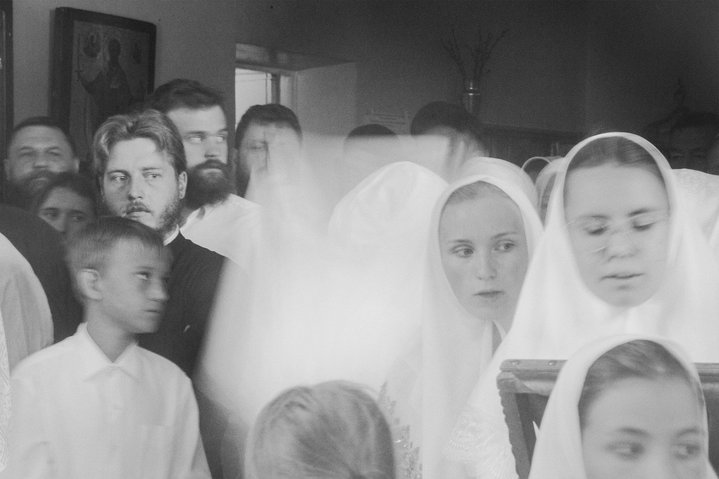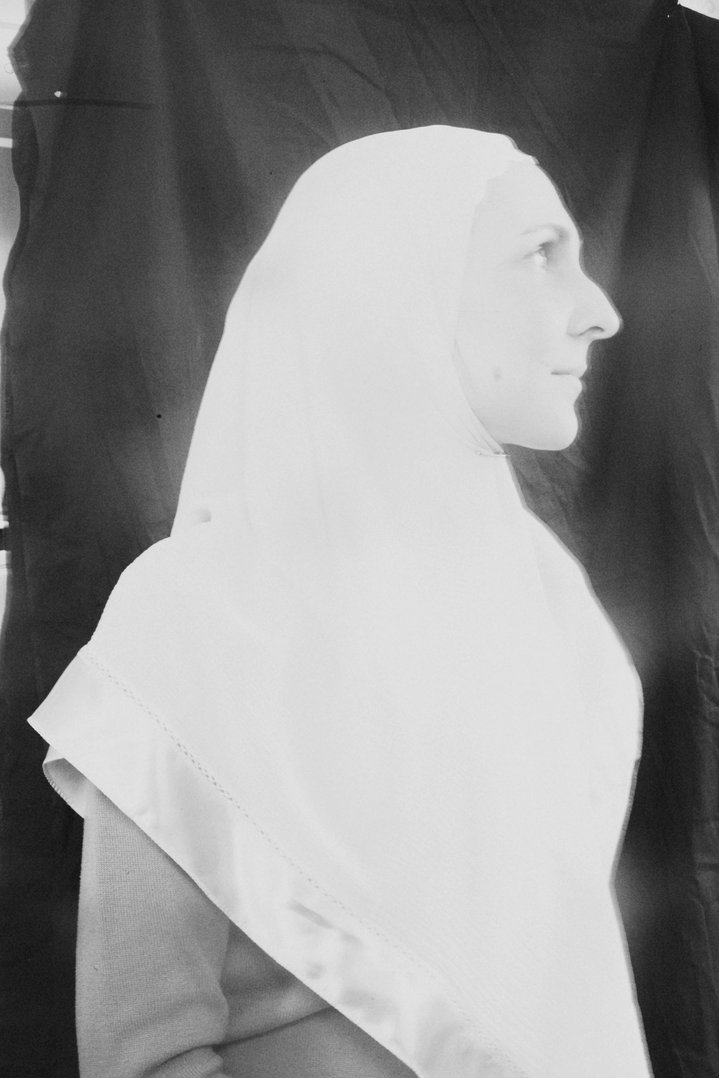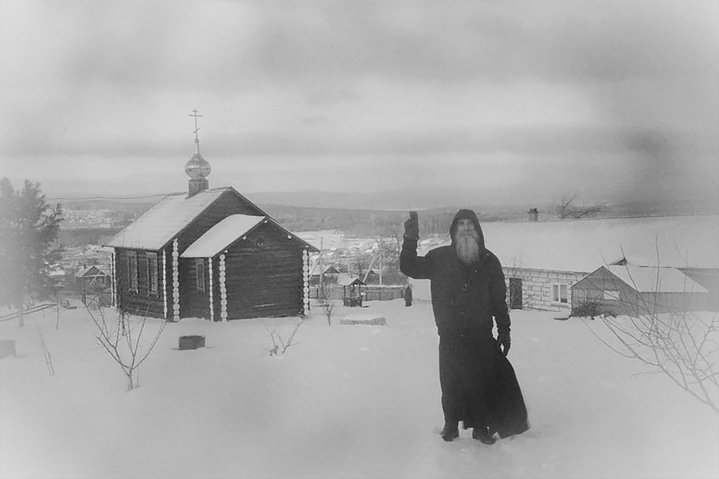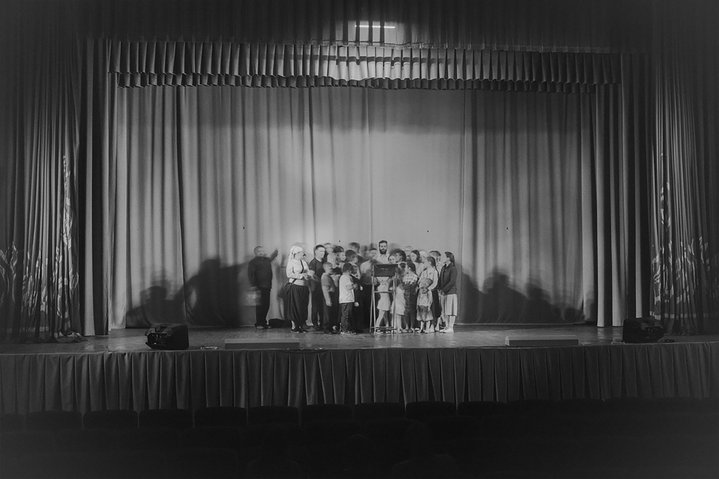Fyodor Telkov. Tavatuy, 2021
Fyodor Telkov: seeing into belief
This photographer from the Urals has spent many years capturing the closed, secretive communities of Old Believers hidden in remote corners of the Russian taiga. This spring, he is showing his discoveries to the public at MMoMA.
In the half-light of a forest clearing, young men carry a wooden cross through tangled foliage. The sepia-toned image captures a shaft of sunlight illuminating the distinctive shape of the cross – the style, simple and unadorned, is that of Russia’s orthodox Christian Old Believers.
It is one of a series of photographs by Fyodor Telkov (b. 1986) from a years-long project depicting the lives of Old Believers in modern Russia entitled ‘Right to Believe’ to be shown at Moscow’s Museum of Modern Art in March.
Telkov is fascinated by these reclusive religious communities, who have survived persecution and repression since the 17th century, when they split from the church over liturgical reforms. Pursuing an original version of eastern Orthodoxy, the Old Believers were exiled to Siberia, while other dissenters fled abroad to the US and Brazil.
“Belief, religion sets a person apart,” Telkov told RAF in an exclusive interview. “It affects their values and their choices, different religions create different ways of life.” The photographer gained access to Old Believer communities in his native Urals region, building trust over years through word of mouth recommendations. In 2016, he was allowed to start documenting daily life in their remote forest villages.
Telkov’s visual style conveys a religious faith anchored in the past, inspired, he says, by Maxim Dmitriev’s photographs of Old Believers in the early 20th Century. “I wanted to show a tradition where little has changed for 100 years, to create an impression which makes it hard to know when the photos were shot,” Telkov explains. Photographed in low contrast black and white, with natural light and long exposure, his images show us a community bound by seemingly timeless religious ritual and cut off from the modern world.
Before choosing photography, Telkov considered studying history and Russia’s past is a consistent thread in his work. He takes an intuitive approach, exploring traces of older cultural roots still visible in the personal stories of marginalized groups.
This affinity may come from his own experience growing up in the industrial city of Nizhny Tagil where Telkov says he always felt like an outsider. In a neighborhood dominated by the massive Uralvagonzavod engineering works, his family was different; Tselkov’s father is a writer and, for a time, his parents ran a local publishing enterprise.
With the end of the Soviet Union, the city’s industrial might declined and Telkov says it’s now a depressing place. He records the collapse of a monumental ideology in ‘Descendants of the Dream’ (2014), with dilapidated streets and blank, stoic despair etched in its people’s faces.
Photo projects on Russia’s indigenous peoples, ‘Ural Mari. There is no Death’ (2017–2019) and ‘Family, Taiga, Reindeer’ (2010) , examine their experience of forced assimilation in the Soviet period. In some images, faces young and old stare out at the viewer, subtly framed by Telkov in an urban context, which feels alien and unfamiliar. But, some indigenous families have returned to an older way of life in Russia’s remote Taiga regions. Pictured in icy, northern snowscapes, with stunningly beautiful night skies, these are the people whose belief system will allow them to regain a balance with nature and survive, suggests Telkov.
“Northern people can cope better with an alien context, they have something extra but the ordinary people who lived under the Soviet system had nothing else and it’s destroyed,“ he reflects.
Tselkov’s photographic observation shows the Old Believers as a community also clinging to tradition as a means of survival. Members of the congregation stand near the forest shrines wearing old-fashioned clothes - the women in prescribed skirts and headscarves. They seem ghostly, fading into their surroundings and yet, the next image shows a priest, his bearded features in sharp focus, his gaze direct. In a way says Telkov, these are the heroes of the story, who are trying to protect a belief system which is under threat. “But they are getting old,” he adds. “It’s as if they are disappearing in front of my eyes.”













